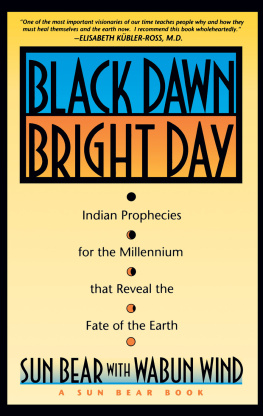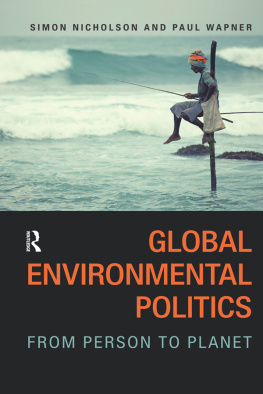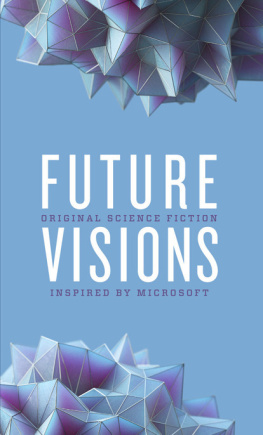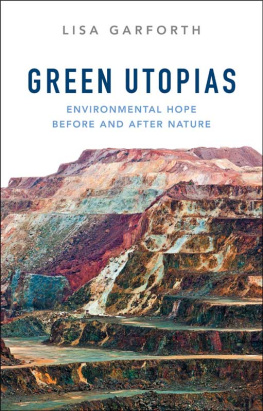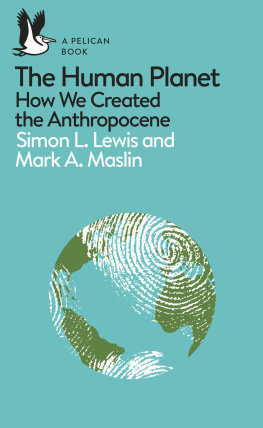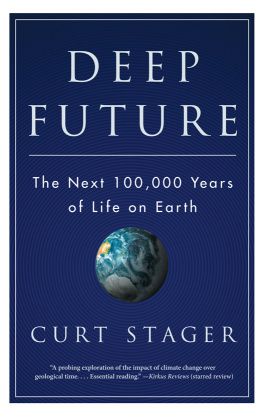THE NATURE OF TOMORROW
MICHAEL RAWSON
The Nature of Tomorrow
A HISTORY OF THE ENVIRONMENTAL FUTURE

Published with assistance from the foundation established in memory of Amasa Stone Mather of the Class of 1907, Yale College.
Copyright 2021 by Michael Rawson. All rights reserved.
This book may not be reproduced, in whole or in part, including illustrations, in any form (beyond that copying permitted by Sections 107 and 108 of the U.S. Copyright Law and except by reviewers for the public press), without written permission from the publishers.
Yale University Press books may be purchased in quantity for educational, business, or promotional use. For information, please e-mail (U.K. office).
Set in Scala and Scala Sans type by Integrated Publishing Solutions.
ISBN 978-0-300-25519-5 (hardcover : alk. paper)
Library of Congress Control Number: 2021936875
A catalogue record for this book is available from the British Library.
This paper meets the requirements of ANSI/NISO Z39.48-1992 (Permanence of Paper).
For my children,
for your children,
and for their children
Its a poor sort of memory that only works backward.
The White Queen in Lewis Carroll, Through the Looking-Glass (1871)
CONTENTS
PREFACE
THE SCIENCE FICTION WRITER William Gibson wrote a now classic short story that has special resonance for me. It is the tale of a photographer working on an illustrated history of futuristic architecture from the 1930s. All goes well with the project until the photographer, having dived too deeply into his work, finds himself beset by hallucinations of flying cars, enormous zeppelins, monumental art deco cities, and other icons of a future that never was. These semiotic ghosts, fragments from the collective unconscious spilling into his reality, drive him half mad before he is finally able to exorcise them.
Having immersed myself in similar sources for over a decade, I cannot help but read Gibsons story as a cautionary tale. So I want to take advantage of my current mental equilibrium and say a few words about how this book evolved and the choices I have made along the way.
The Nature of Tomorrow explores a genre of Western ideas about the natural world that historians have largely overlooked: visions of the environmental future. I began my research with the intention of focusing on ecological utopias, imagined societies that exist in balance and harmony with the natural world, usually in some distant tomorrow. I was not surprised to find that such visions have been the exception rather than the rule. I was, however, surprised by what I discovered to be the rule itself: visions of tomorrow based on the single-minded expectation of endless growth on a finite planet, regardless of whether the end result was a utopia or environmental collapse. The theme of growth soon moved to the center of my research, resulting in a different book than the one I set out to write but perhaps a more relevant and urgent one. Stories about the future have reflected and promoted a widespread expectation of unlimited growth, an expectation that has, in turn, made a truly sustainable relationship with the earth more difficult to imagine.
One of the greatest challenges I faced in the early stages of writing this book was choosing the scale at which to work. I originally deferred to my training and planned to focus my research on the United States, only to find that the ideas I was pursuing kept escaping across national boundaries. The renowned historical geographer Clarence Glacken had once encouraged anyone studying environmental ideas to follow them wherever they led, even into areas patrolled by scholars who knew the terrain far better. Failing to do so, he warned, would leave the unadventurous researcher sipping a thin gruel. So I took his advice to heart and briefly reimagined the project on a global scale. That, however, turned out to be too ambitious a structure, one that even the great Glacken steered clear of.
I finally decided to concentrate on the West, which proved a perfect fit for the themes emerging from my research. The Wests progress and growth-fueled environmental dreams, while not the only way of imagining the nature of tomorrow, have formed a coherent tradition and been more than influential enough to merit a study of their own. I also became convinced that understanding the distant origins of the present-day fixation on growth requires a long timescale, leading me to take on the additional challenge of covering several centuries in a single volume.
The book focuses most closely on those countries that have had the largest impact on formulating the environmental ideas I explore: Britain, France, and later the United States, which has long been the land of frontiers and futures. Although readers will also come across the work of Danish economists, Italian futurists, and German science fiction writers, I have made no effort to be comprehensive in my coverage. The commonalities in attitudes toward human progress and expansion have been so strong across the West that, despite national differences in environmental thought, my story would look much the same no matter what countries I emphasized. Environmental imaginaries can and do operate on different levels: some are indeed national, like the distinctive set of ideas that gives meaning to forested landscapes in Germany, but others are transnational.
My sources are eclectic, and necessarily so, since Westerners have expressed their visions of the environmental future in a variety of different ways. I combed the literature on utopias and imagined futures for scientific, technological, and environmental themes, examining both fictional and nonfictional predictive literature as well as visual media, like advertisements and movies. As a result, the reader will encounter everything from Tommaso Campanellas seventeenth-century utopia The City of the Sun, to the nineteenth-century renderings of British illustrators, to the speculations of twentieth-century think tanks like the RAND Corporation. These various sources have intertwined with and influenced each other over time, together giving shape to a powerful tradition of environmental dreaming.
Some of the sources I discuss were influential, while others attracted far less notice. At a number of points in this book, I do not hesitate to give as much attention to the latter as I do the former. One of my primary goals is to reveal as much of this environmental imaginary as possible, and sometimes a little known work does more to illuminate its dim corners than a best seller. Some of the more obscure works also help me to emphasize what historians call contingency, the idea that the past could have unfolded differently and that there are multiple possible futures. To that end, these works uncover paths not taken and, in some cases, paths still open for exploration.
Since I am focusing on expectations of how human beings will transform the earth, certain genres of prophetic literature figure less prominently in the book. I look at stories that explore humankinds future in outer space only when the environments of distant planets are clearly intended to stand in for earth. Also, I include tales of natural disasters like unanticipated ice ages and collisions with comets solely when such events influenced how characters subsequently interacted with the natural world. Finally, I explore Christian-influenced visions of tomorrow so far as they represent future worlds designed and built by humans rather than by God.
The sources reflect a great deal of consistency in attitudes toward growth across lines of class, gender, and nationality. That is not surprising given that the vision of ever expanding abundance at the expense of nonhuman nature has always rested on the assumption that growth would lift all boats. The opening of new lands, new mines, new factories, new cities, and perhaps even new planets, along with the spread of labor-saving machinery, has long implied more opportunities and more wealth for everyone. It has been difficult to argue against that logic in the past, just as it continues to be today. The only people generally excepted from this projected abundance were the members of nonwhite races. The sources do not tend to depict this group as sharing in the growing pie until the late twentieth century.
Next page

